Traditional Chinese Instruments: The Guzheng
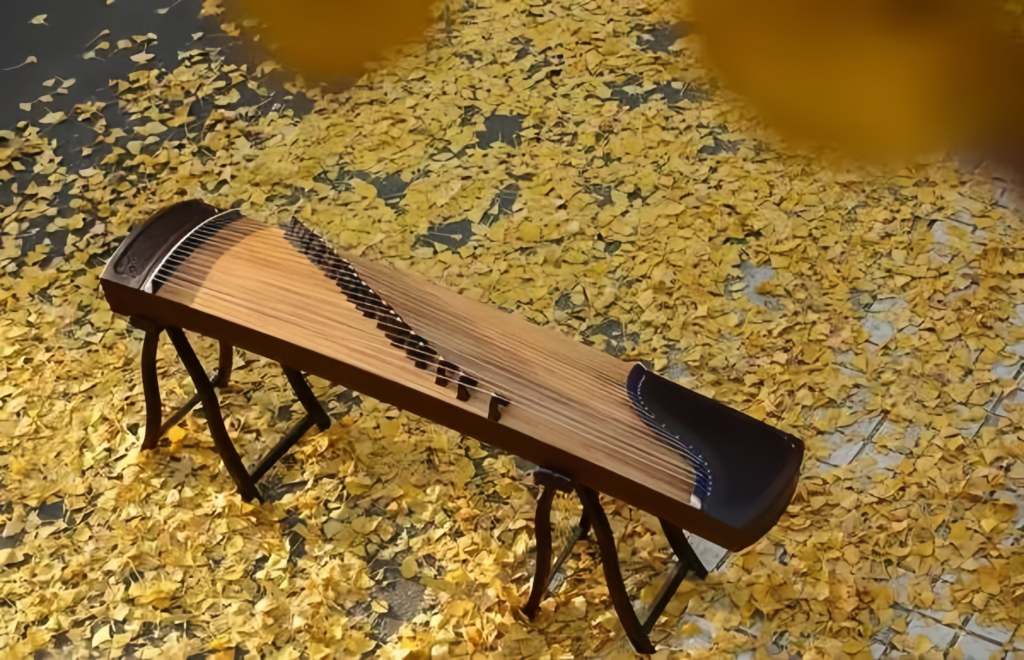
The guzheng is an ancient Han ethnic music instrument with a total of 10 levels. Its structure includes a soundboard, bridges (called yanzhu), strings, front yueshan, tuning pegs, tuning box, feet, back yueshan, side panels, sound hole, baseboard, and string holes.

The guzheng has a rectangular wooden soundbox, with movable string racks (yanzhu or bridges) that produce one note per string, arranged in a pentatonic scale. It originally had the most strings with 25 (split from the se to become the guzheng), dropping to 13 strings in the Tang and Song dynasties, then growing to 16, 18, and 21 strings. Today, the 21-string version is the go-to, often labeled S163-21—where “S” stands for the S-shaped yueshan invented by Wang Xunzhi and Miao Jinlin, “163” means about 163 cm long, and “21” indicates 21 strings, a key part of traditional Chinese instruments.
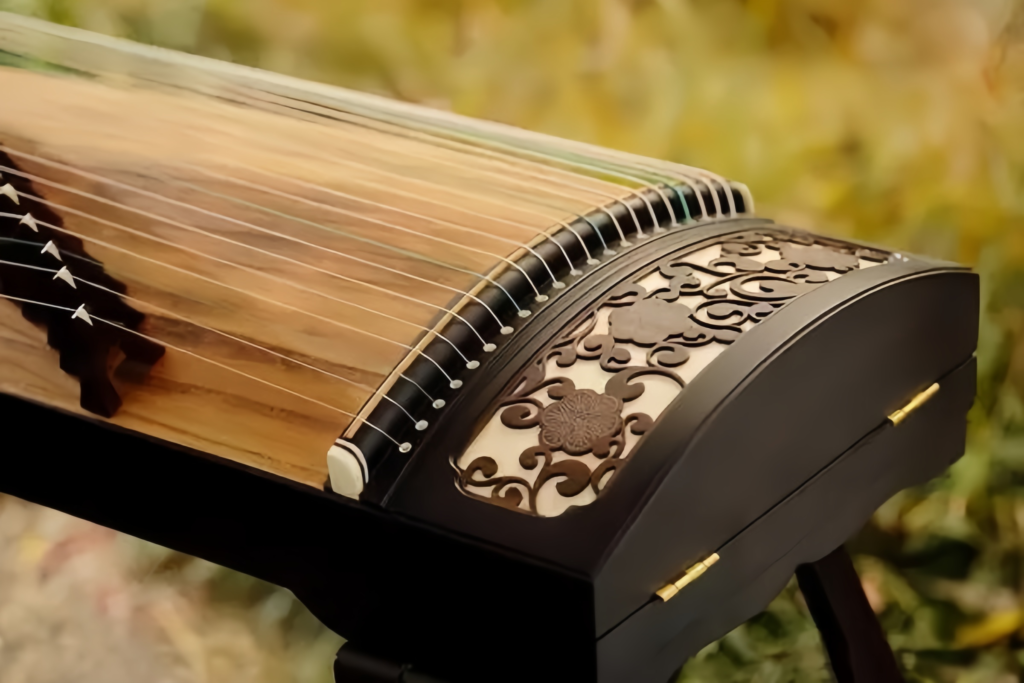
Dating back to the Warring States period (5th to 3rd century BCE), the guzheng was widely played in the Qin region (modern-day Shaanxi), earning the nickname Qin Zheng. That gives it over 2,500 years of guzheng history.
Ying Shao’s Fengsu Tong from the Han dynasty notes: “The guzheng, per the Book of Rites and Music, had five strings and a zhu body. Now, in Bing and Liang states, it looks like a se—unclear who changed it. Some say Meng Tian made it.” This shows that before the Han, the guzheng likely had a five-string, zhu-shaped design, but in northwest regions like Bing (Shanxi) and Liang (Gansu), it took on a se-like form, with rumors pointing to Meng Tian as the innovator.
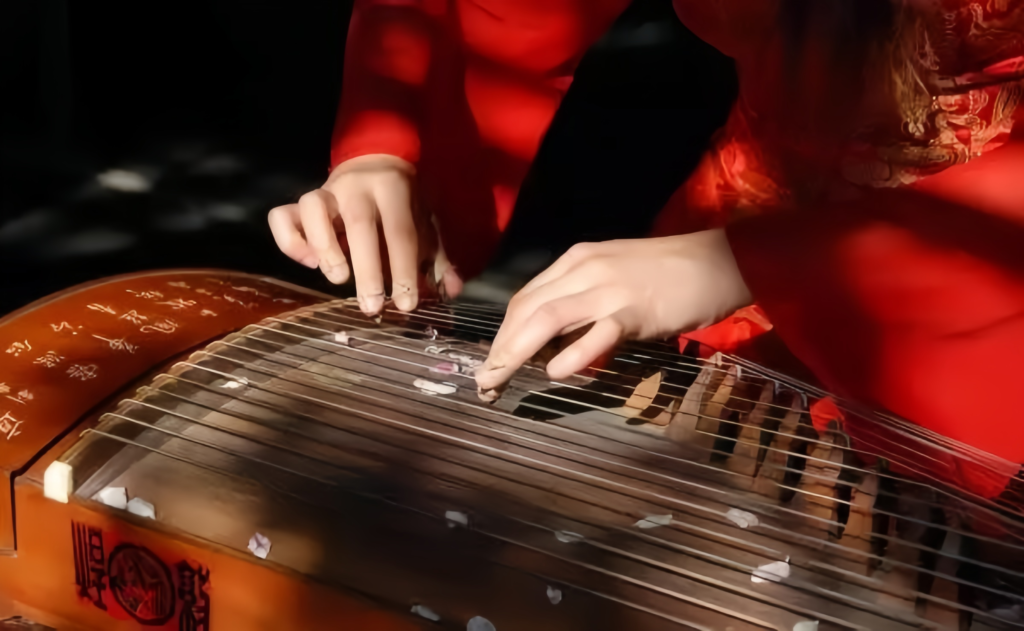
Du You’s Tong Dian: Music Section from the Tang dynasty says: “The guzheng is a Qin sound. Fu Xuan’s Guzheng Fu Preface claims Meng Tian created it. Looking at it now, its top mimics the sky, base the earth, hollow center fits the six directions, string racks reflect the 12 months—set up, it holds the four symbols; played, it releases the five notes. This is a tool of wisdom and kindness, not something a fallen minister like Meng Tian would think up.”
A note adds: “Today’s Qing music guzheng has 12 strings, other styles 13. The raking guzheng uses a moistened bamboo strip to rake it, while playing uses a bone pick over an inch long instead of fingers,” enriching the Chinese cultural music heritage.
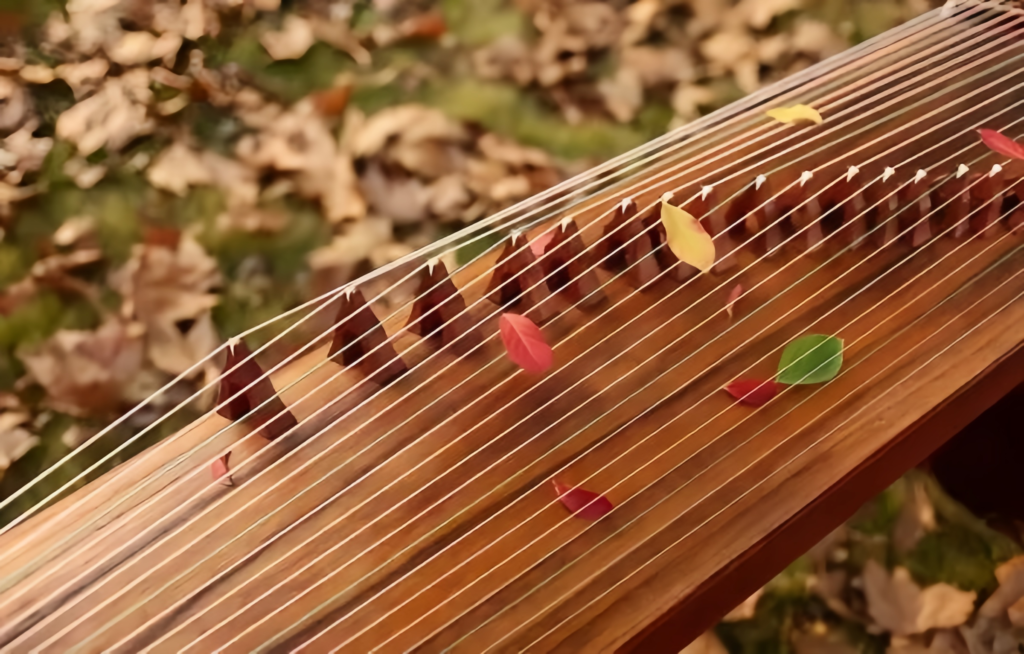
Ying Shao’s Fengsu Tong describes the guzheng as “five strings, zhu body,” but what “zhu” looked like remains fuzzy in old texts. In 1973, a Han zhu model was dug up from Changsha Mawangdui Tomb No. 3. It’s called a model because, though lacquered black, it’s carved from a single wood block—solid, not great for resonance, and too short at 34 cm for playing (the Tong Dian says Tang zhuk were 4.3 feet long, so the difference is huge).
This suggests it’s a ceremonial piece, shaped like a small handled se, with five bamboo nails per end matching Fengsu Tong’s record. Its se-like look hints that se, zhu, and guzheng styles were pretty similar, a fascinating bit of guzheng history.


Guzheng Structure Diagram
Traditional Chinese instruments like the guzheng use the right thumb, index, middle, and ring fingers to pluck strings for melody and rhythm. The left hand works on the string side of the bridge, using tension to tweak pitch and enrich the tune.
The guzheng has tons of techniques: right hand does hooks, lifts, splits, picks, wipes, flicks, taps, shakes, and pinches; left hand adds presses, slides, rubs, and trills.
The guzheng splits into four groups: double high 1, high 12356, mid 12356, low 12356, and double low 12356. For 4 or 7 notes, the left hand presses the 3rd or 6th string about 1 cm from the bridge to add tension. To play a 4, press the 3rd string there, then pluck with the right; for a 7, press the 6th string the same way, showcasing Han ethnic music skills.

The standard guzheng is 1.63 meters long with 21 strings. Most soundboards use Tong wood from Henan Lankao, with frames of white pine, and sides, head, and tail of premium woods like rosewood, old rosewood (Myanmar padauk), golden nanmu, or ebony. Sound quality hinges on the soundboard and strings, though surrounding materials like old rosewood, ebony, or golden nanmu slightly boost tone, a key aspect of guzheng care tips.
The guzheng is a great resonator, built from a soundboard, baseboard, head, tail, yueshan, bridges (yanzhu), tuning pegs, and sound holes.
As a stringboard resonator, its soundboard vibrates with the bridges’ string movement, so the soundboard, bridges, and string quality directly affect the guzheng’s music and volume.
Soundboard: Paired with the baseboard and side frames, it’s the vibrating surface. Material and thickness decide tone and volume—best made from aged Tong wood, dried and soft for top results.
Baseboard: Acts as a vibration reflector, usually solid Tong or pine, with sound holes on the sides.
Side Panels: Thicker wood forms the frame with the soundboard and baseboard, creating a rectangular resonator.
Sound Beams: Also called yueshan, these are set at the head and tail to support the soundboard and baseboard, boosting resistance for clear, smooth sound. Tong or birch works well.
Bridges: Or yanzhu, transmit string vibes to the soundboard for resonance. Material quality, height, and thickness matter—hardwoods like rosewood or cow bone/ivory are top picks.

Tuning Pegs: Metal pieces that anchor and tune strings.
Strings: Each string has its own bridge in this plucked instrument, with thickness and length scaled from high to low. Traditional silk or steel strings have shifted to nylon-wrapped steel, blending clarity and elasticity for louder, brighter tones with more potential than old strings.
Stringing starts by fixing one end at the tail’s string hole, threading the other through the head’s peg hole, tightening with a tuning wrench, and placing bridges under the tensioned strings. For a 21-string S-type guzheng, based on average arm length, the highest string’s effective length (from bridge to front yueshan) is about 16 cm, the lowest about 80 cm. Bridges should align straight between front and back yueshan to avoid string drift or bridge wobble causing tuning issues.

Guzheng Tuning and Range
Tuning sets the strings to specific pitches. The guzheng follows China’s traditional pentatonic scale—gong, shang, jiao, zhi, yu (12356). High notes are inside, mid notes in the middle, low notes outside, counting from the first high string outward: 1, 2, 3, 4, 5… 21, totaling 21 strings.
The range spans the lowest to highest notes a voice or instrument can hit. A 21-string guzheng covers four octaves, called four groups, with colored strings marking note positions for easy reading, showcasing the rich heritage of traditional Chinese instruments.
With a wide four-octave range, the guzheng’s tone is sweet and elegant: high notes are crisp and bright, mid notes soft and refined, low notes rich and deep. It can play lively, graceful tunes like Han River Silk Bamboo’s Cold Ducks Playing in Water or High Mountains Flowing Water with its Jiangnan flair, or bold, powerful pieces like The King’s Armor Removal and Fighting Typhoon. It shines in solos and blends into duets or ensembles, adding depth and artistic vibe to Chinese cultural music. No wonder it’s a favorite, standing out as a top traditional Chinese instruments.
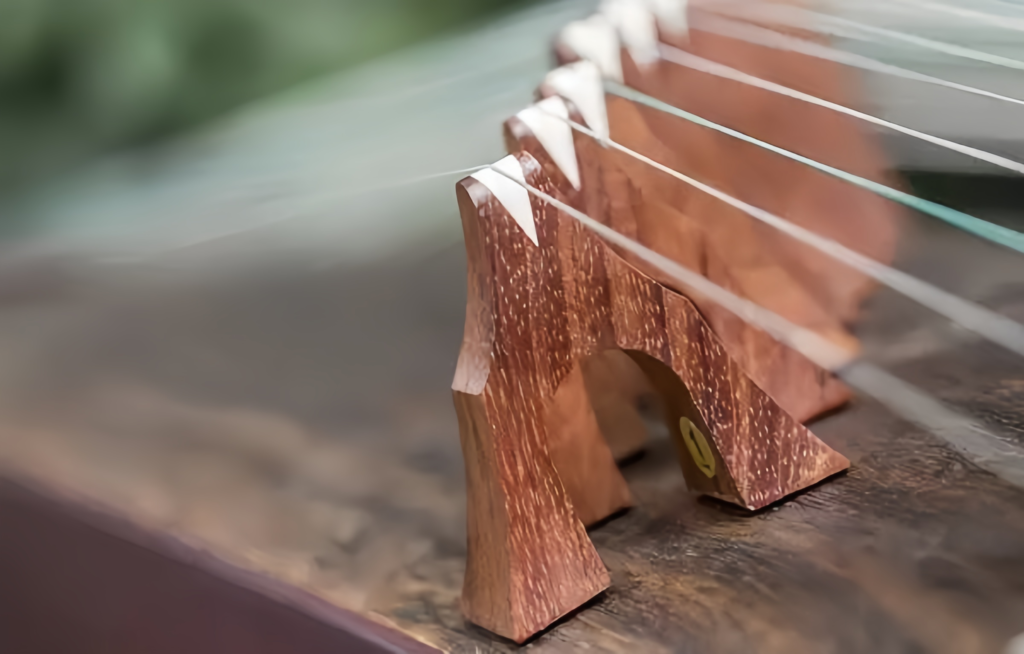
Early guzheng history music split into northern and southern schools, with major styles from Zhejiang, Shandong, Henan, Hakka, and Chaozhou. Today, the lines blur as each style borrows the best from others.
Since Qin and Han times, the guzheng spread from northwest China nationwide, mixing with local operas, storytelling, and folk music, creating styles rich in regional flavor. Traditional music divided into north and south, now generally nine schools, as Cao Zheng put it: “Nine streams flow through China.” Each school’s tunes and techniques have their own flair, reflecting Han ethnic music traditions.
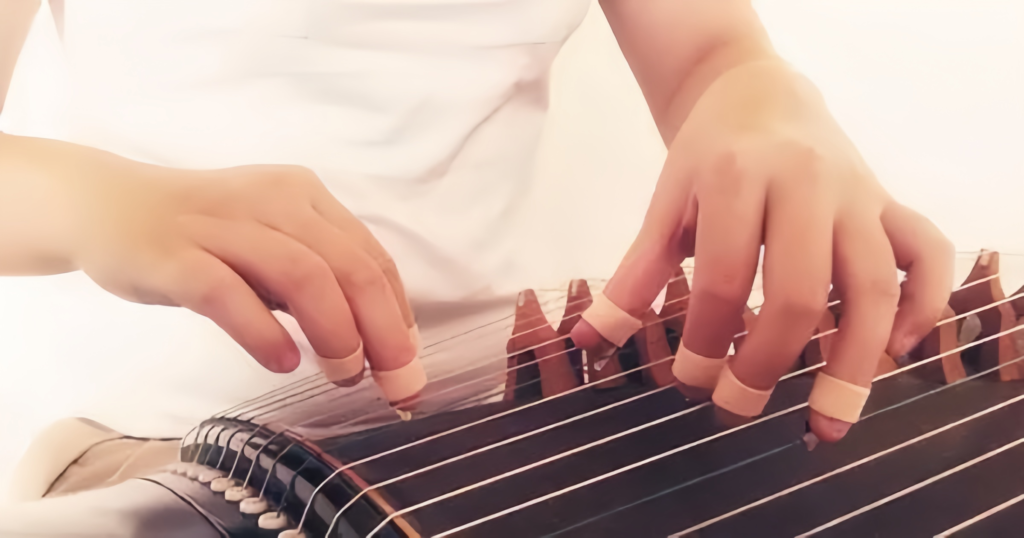
Its types include Shaanxi, Henan, Shandong, Chaozhou, Hakka, Jiangxi, Zhejiang, and Fujian guzheng. Used for solos, duets, ensemble playing, and backing dance, opera, or storytelling, its wide range and beautiful tone earn it the title “King of All Instruments” or “Oriental Piano,” a jewel of Han ethnic music.
Basic Guzheng Care Tips

Keep the guzheng in a ventilated, dry spot. Dampness can cause glue to loosen or wood to warp, while constant sun or heater exposure can lead to cracks, messing with the tone, so following guzheng care tips is key.
Weather shifts, air quality, human handling, and material aging can all speed up guzheng wear. The saying “a guzheng thrives with care” holds true—smart upkeep boosts its sound and lifespan. Here are some handy tips:
Car Transporting a Guzheng Tilt the front passenger seat back, slide the guzheng tail in through the front door to behind the driver’s seat, place the head by the passenger’s foot space, then raise the seat to the roof.
Fixing Dents from Foreign Objects on the Soundboard Drop a bit of water into the dent; it usually pops back up after absorbing moisture. If it doesn’t fully recover, mix animal glue with Tong wood powder, smooth it out, and polish with shellac. Minor flaws? Skip fixing—they don’t hurt the sound. Avoid chemical glue with wood powder!
Repairing Small Cracks on the Soundboard Cracks come from dry climates (humidity below 40%, often human-caused) shrinking the wood, internal flaws showing with humidity swings, or poor assembly stress. Use 502 quick-dry glue to seep into fine cracks.
Preventing Wear Under the Left-Hand Press Area When playing slides or minor third presses, left-hand nails—especially fake ones—can scratch the soundboard. Beginners can pad a soft plastic sheet underneath. If wear spots show, don’t sand them down—thinning the board changes the tone.
Daily Use and Care Basics The guzheng handles any temperature but hates humidity extremes. A 50-70% humidity range keeps its vibration and sound spot-on. Below 50% humidity cracks the surface or baseboard; above 70% mutes the sound, shortens resonance, and dulls the tone. Get a hygrometer for your study to act fast. Sound-wise, the guzheng’s storage needs good air reverb time—too long sweetens the tone, too short makes it “dry.” Aim for 1.2-1.7 seconds. In short, “a guzheng thrives with care.” Regular play and proper upkeep keep it vibrating well, tuning its parts over time, making guzheng care tips essential for its longevity and part of traditional Chinese instruments maintenance.
Related Articles
Related Articles
Love the guzheng’s charm? Check out Hanfu & Guzheng Photoshoot for deeper insights into its beauty paired with Hanfu traditions, ideal for anyone eager to explore cultural elegance.
Keen to learn more? Learn More About Hanfu for deeper insights into Hanfu traditions, ideal for anyone eager to explore traditional fashion.
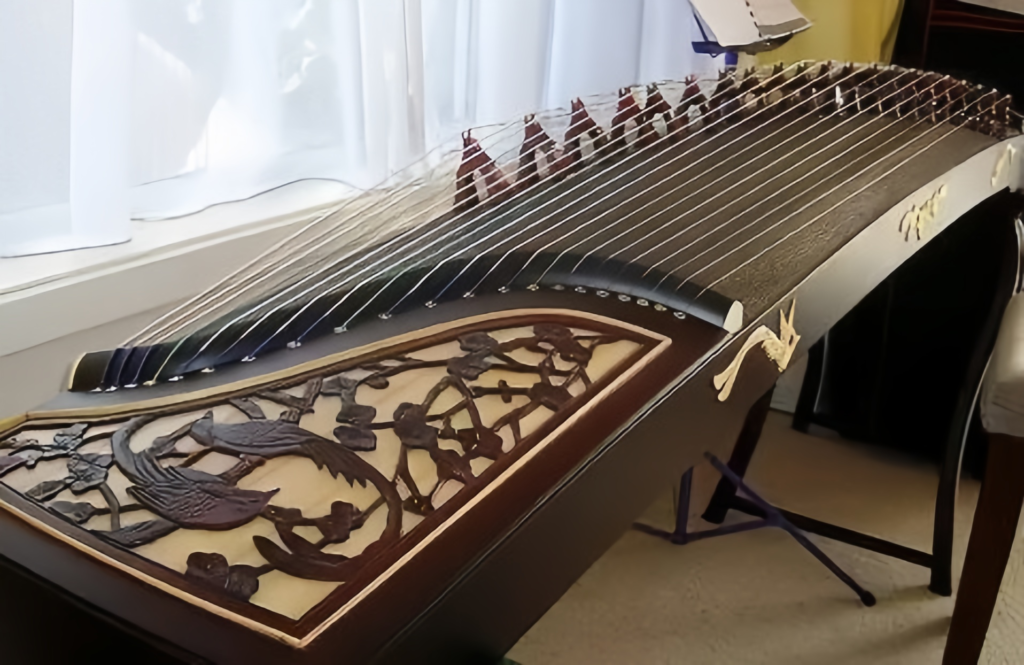


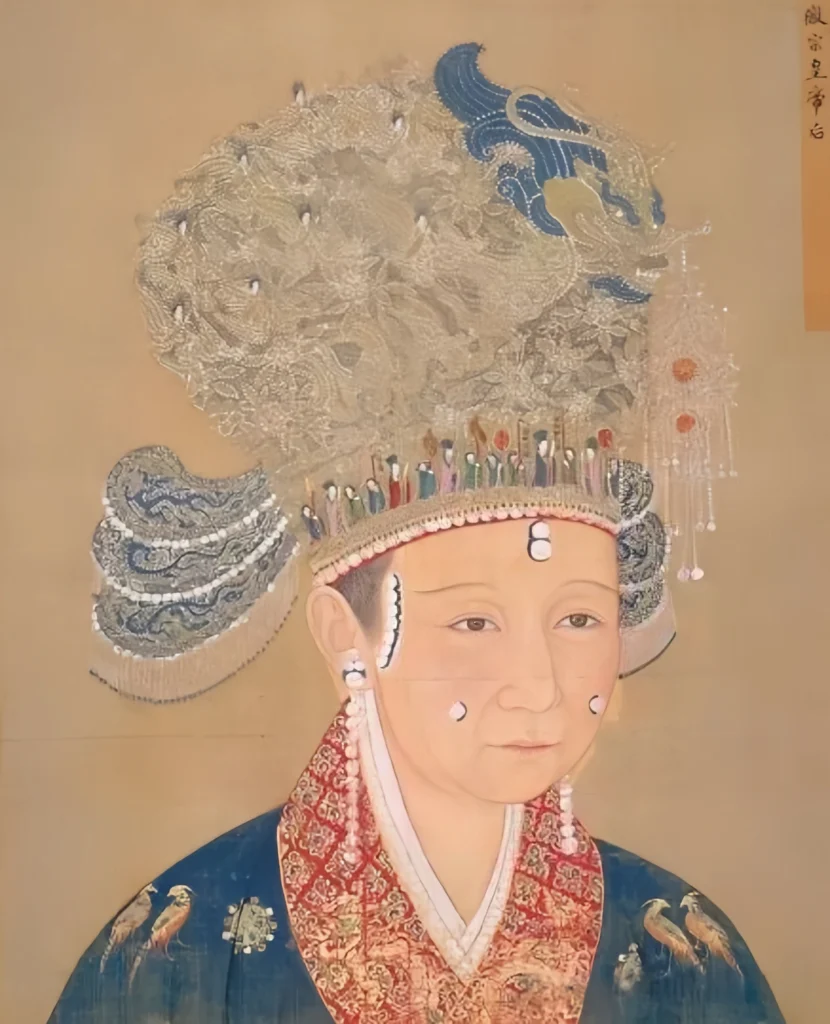
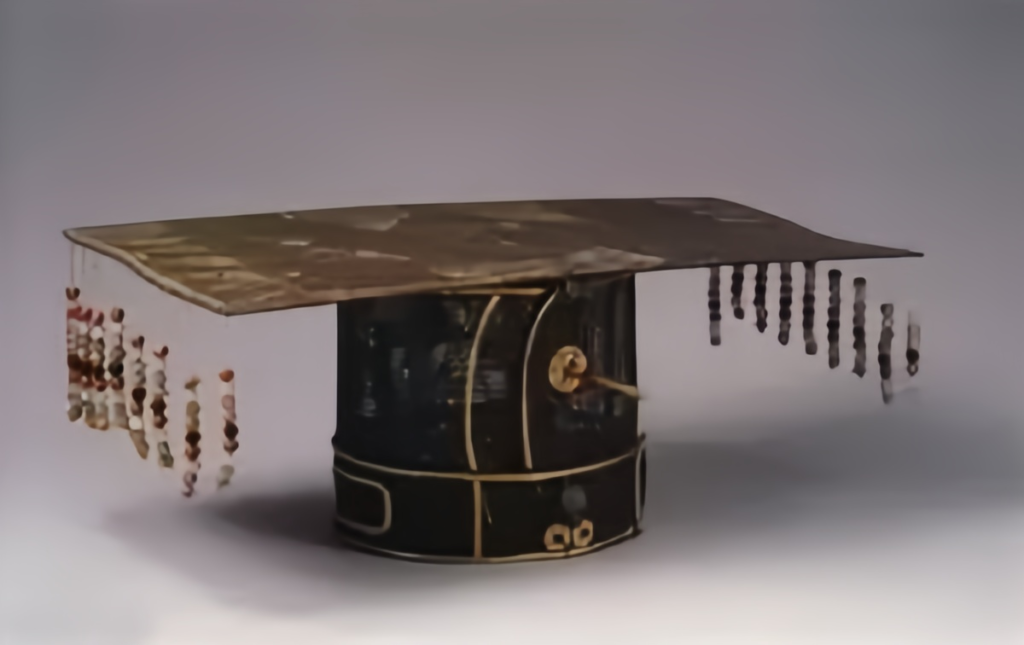
Responses